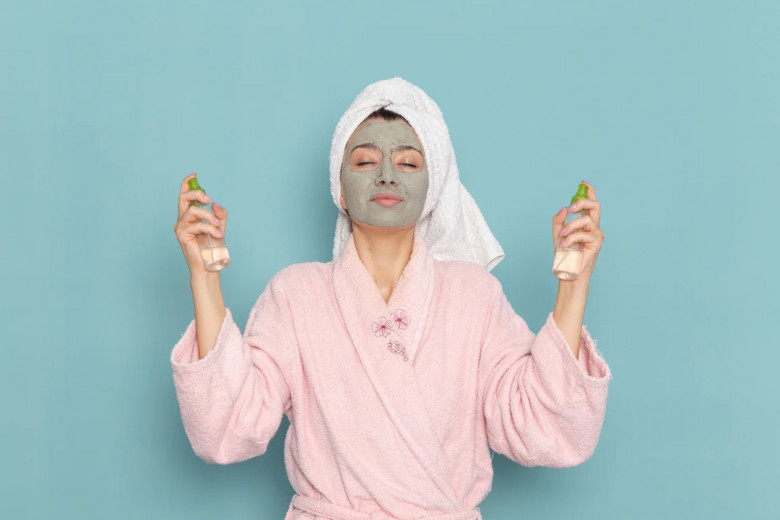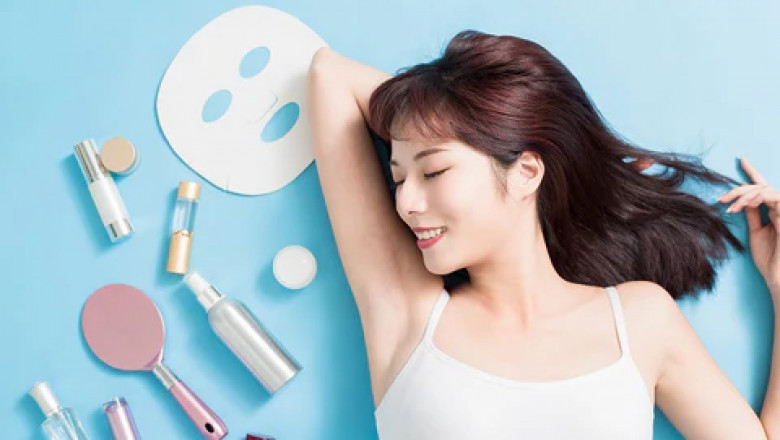views
Japanese vs Korean Skincare: Which Routine Works Better?
In the skincare world, both Korea and Japan are renowned for their innovative and effective skincare rituals. Combining ancient techniques dating back centuries ago and today's technology, these two countries boast individualized rituals that promise beaming, younger-looking skin. But in considering the Japanese or Korean skincare routine, the ultimate question is—is one better for your skin? Let's analyze it, step by step, to determine which technique might best suit your concern.

1. Philosophy of Skincare: Tradition vs Trend
Their philosophy is what most sets Japanese apart from Korean beauty.
Japanese skin care is pure, simple, and balanced. Japanese skin care routine philosophy is all about maintaining and indulging the skin in a traditional way. Prevention and long-term maintenance of healthy skin are of utmost importance. Japanese skin creams, for example, would be more likely to be formulated with rice bran, green tea, and camellia oil—all of which are extremely renowned for their soothing, rejuvenating properties.
The Korean skincare routine, however, is science-based. K-beauty promotes a "glass skin" ideal—glowing, smooth, and highly moisturized skin. It uses a multi-step layering approach to deeply moisturize and treat skin concerns. It's trend-driven and evolving, with new solutions based on the latest science.
2. Routine Structure: Simplicity vs Layering
When Japanese and Korean skin care routine are compared, the most glaring difference is the number of steps involved.
Japanese Skin Care Routine:
Step 1: Oil-based Cleanser
Step 2: Foam Cleanser
Step 3: Lotion (hydrating toner)
Step 4: Essence or Serum
Step 5: Moisturizer
Step 6: Sunscreen (day)
The Japanese skin care routine involves less number of products to do. It is suitable for individuals who want efficacy without compromise.
Korean Skin Care Routine:
Step 1: Oil Cleanser
Step 2: Water-Based Cleanser
Step 3: Exfoliator (2–3 times/week)
Step 4: Toner
Step 5: Essence
Step 6: Serum/Ampoule
Step 7: Sheet Mask
Step 8: Eye Cream
Step 9: Moisturizer
Step 10: SPF (day) or Sleeping Mask (night)
The Korean routine is longer but offers maximum personalization for individual concerns for every complexion.
3. Key Ingredients: Natural vs Novel
Japanese beauty companies focus on quality and culture. Best Japanese cosmetics are very effective but simple. Rice ferment (sake), algae, and matcha are common ingredients, all of which are renowned for whitening and calming the skin. The best Japanese beauty products tend to be without synthetic fragrance and chemicals, thus ideal for sensitive skin.
Some of the best and highest rated Japanese skincare products include:
SK-II Facial Treatment Essence (rice ferment for radiant skin)
Hada Labo Gokujyun Hyaluronic Acid Lotion (deep hydration)
Shiseido Ultimune Serum (strengthens skin barrier)
These are just a few of the best Japanese cosmetics loved by beauty experts globally. If you’re looking for Japanese skin care products in India, many of these are now available through online marketplaces, offering Indian consumers access to world-renowned Japanese beauty products.
Korean skin care, on the other hand, has been revolutionary. They incorporate new ingredients such as snail mucin, centella asiatica, propolis, and even bee venom. The product texture is also light, with innovative packaging that appeals to younger consumers. Layering system is one that has penetration in the skin and enables treatments based on targeted concerns such as acne, dryness, or hyperpigmentation.
4. Texture, Feel & Product Design
In terms of texture and feel, best Japanese skin care products were found to be silky and smooth in texture and with no or minimal fragrance. They are structured on a sensory feel that is functional but comforting. The packaging is typically lean and refined, reflecting the Japanese ethic of restraint and refinement.
Korean skincare is playful and fun, though. Products have colorful packaging and occasionally themed, interactive packaging to attract the interest of skincare fans who like performing playful routines. Whatever it is, from foamy cleanser to jelly-textured moisturizer, K-beauty makes fun out of skincare.
5. Which Routine Is Better?
Japanese vs Korean skincare—so, who wins? The answer lies in your skin type, lifestyle, and preferences.
Go for Japanese skincare if:
You have reactive, mature, or sensitive skin
You like a more streamlined ritual
You desire products with proven ingredients and fewer allergens
You love top-quality formulas and classic rituals
Opt for Korean skincare if:
You like multi-step layering
You like experimenting with new textures and products
You desire targeted treatments for specific issues such as acne, pigmentation, or dryness
You are willing to spend more time on your routine
Lastly, you do not have to do either or. Most of the skincare aficionados mix the two to formulate a hybrid regimen that blends the sophistication of Japanese skincare with the technology of Korean skincare.
6. Japan Skins vs Korean Glow: What's Trending in 2025
By 2025, the world is experiencing a rise in demand for both trends. Individuals are trying out japan skins—a slang to refer to the plump, round, and naturally radiant skin that defines Japan skins. The glass skin phenomenon in Korea also prevails, with customers asking for that dewy, radiant appearance more than ever.
The upside? Each skin care culture has environmentally friendly means of attaining these ideals of beauty—whether the low-key, delicate beauty of Japan or the high-speed trends of Korea.
7. Access in India: What's Out There?
If you’re based in India and looking to explore either routine, there are plenty of options now available. For Japanese skin care products in India, platforms like Amazon, Nykaa, and international delivery services stock brands like Shiseido, Hada Labo, DHC, and SK-II.
These Japanese beauty firms have attained global popularity due to their efficiency and kindness. Likewise, Korean firms such as Innisfree, COSRX, Some By Mi, Laneige, and Etude House are conveniently discovered and nicely trending among Indians.
Final Thoughts
Pick either the Japanese vs Korean skincare regimen based on your complexion. Both are great options, and there is no "correct" one—just the routine that is right for your life and what matters to you.
Whether you adore the best of Japanese skin care products for their gentle naivety, or the Korean skin care routine for its technological layering, you're investing in the long-term health of your skin. Try both ways, try responsibly, and you'll end up with your perfect match.














Comments
0 comment